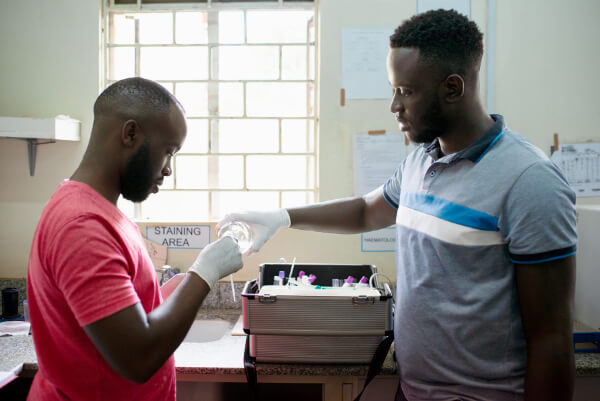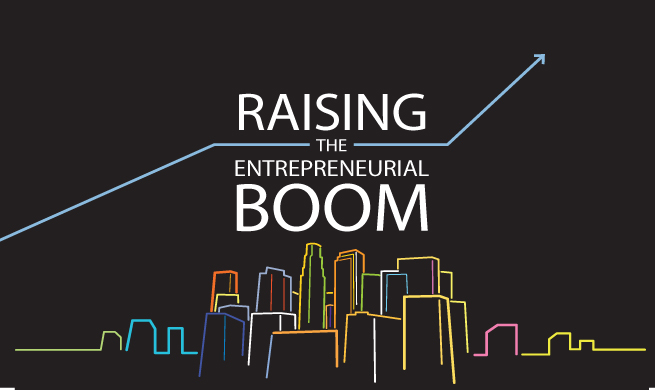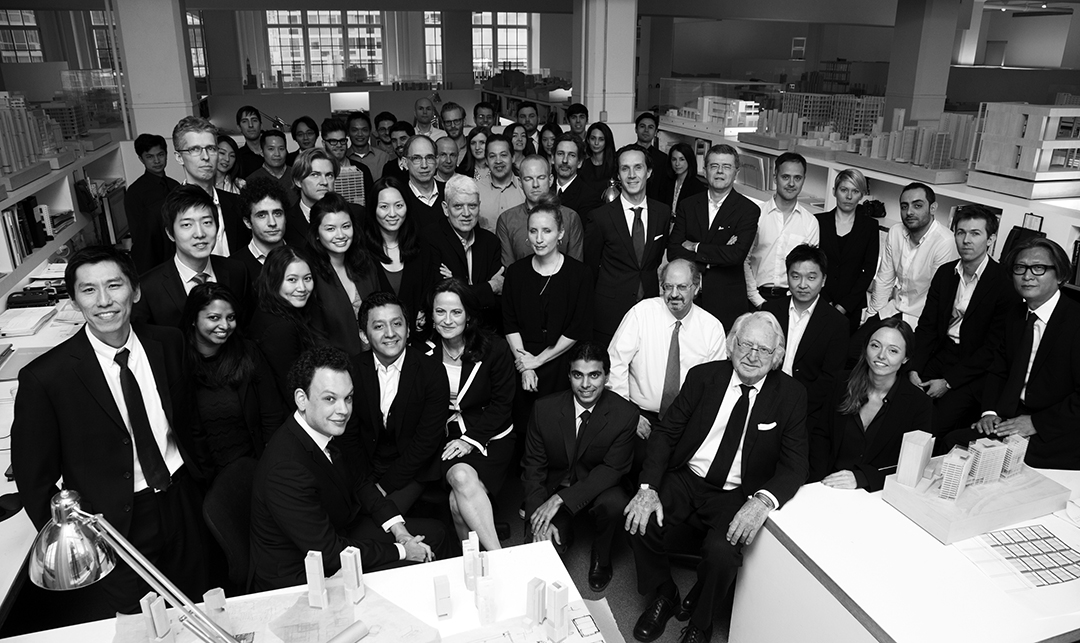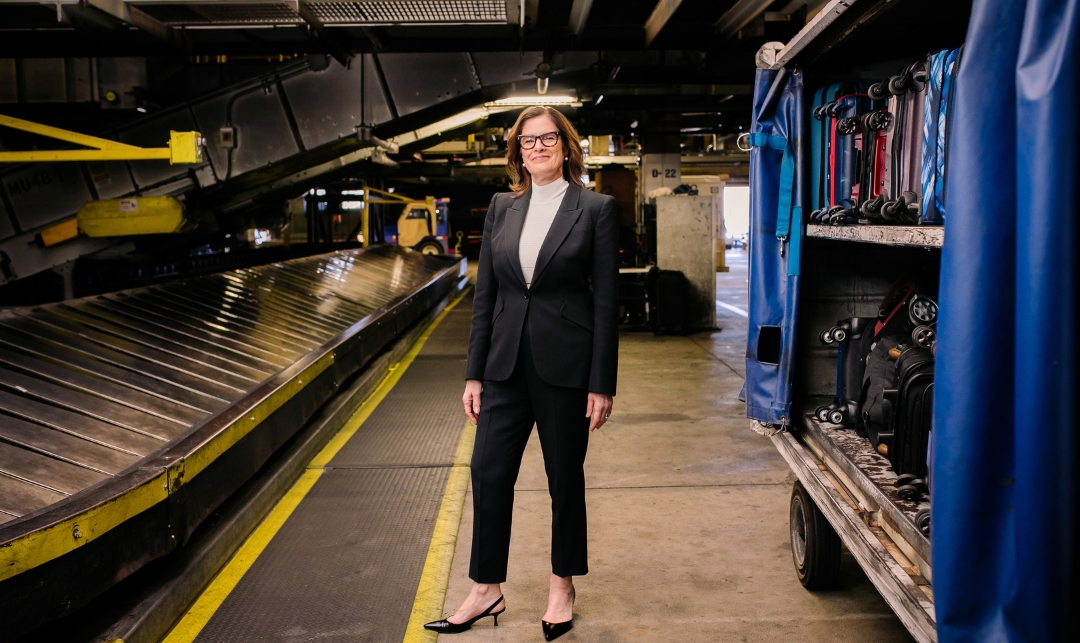Since taking over as CEO of Pittsburgh International Airport in 2015, Christina Cassotis has transformed it into a model of innovation, resilience, and growth. Under her leadership, nonstop destinations have nearly doubled, passenger traffic has surged, and PIT became the first major airport to run on its own natural gas and solar energy microgrid. But Cassotis views her role as more than managing an airport—she sees it as reshaping an industry. In this conversation, she shares how her early exposure to aviation shaped her people-first leadership philosophy, the strategies behind Pittsburgh’s air service renaissance, and her vision for the airport of the future.
YOU GREW UP IN A FAMILY DEEPLY CONNECTED TO AVIATION. HOW DID THAT EARLY
EXPOSURE SHAPE YOUR PERSPECTIVE ON LEADERSHIP?
My father was a pilot for Pan Am, which allowed us to live abroad while I was little. Those were the “sky god” days. He would travel the world and then come home and cook dishes that he tried in various countries. Airlines – and airports – are portals for opportunity and experience, expanding cultural horizons. That exposure to different cultures and perspectives sparked my interest in aviation, but its core purpose – serving people – has shaped my perspective on leadership. Aviation unites people, delivers life-saving organs and medications, and supports businesses and economies, and therefore, livelihoods. I am a people-first leader, so I operate the same way. Everything I do is in support of people – our team, passengers and partners. I think about the people that are impacted by our initiatives today, but also in the future, through what I call Legacy First LeadershipTM. I didn’t take this role to run an airport. I came to change an industry and leave it better than I found it, and we’re making great progress.
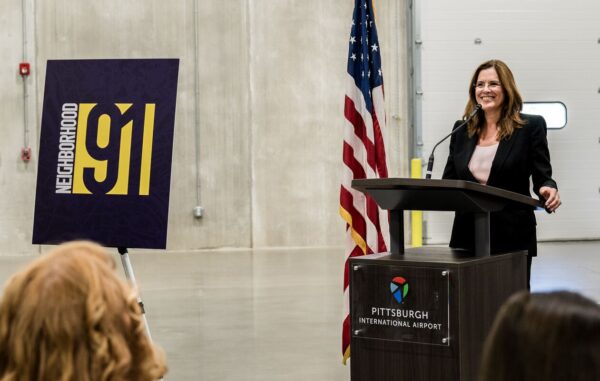
Cassotis at the N91 Press Conference
SINCE TAKING THE HELM, NONSTOP DESTINATIONS HAVE INCREASED FROM 36 TO 62. WHAT’S BEEN YOUR STRATEGY FOR ATTRACTING AND RETAINING AIRLINE PARTNERS?
Air service has been a priority from the day I arrived. From my previous work as a consultant for the aviation industry, I understand that airlines serve markets, not airports. We pursue routes for which there is a strong business case, meaning there is enough demand to sustain them long-term so retention is more likely. The Pittsburgh region is a strong market, and it was important to help the airlines understand the renaissance this region has undergone. At PIT, we run like a business and strive to be a great partner to the airlines we work with. We have an open line of communication, consider their needs and aim to maintain stable and predictable costs, which will be a benefit of our new terminal for the next several decades.
PASSENGER TRAFFIC HAS JUMPED 25% UNDER YOUR LEADERSHIP. WHAT DO YOU SEE AS THE KEY DRIVERS BEHIND THAT GROWTH, AND HOW DO YOU PLAN TO KEEP THE MOMENTUM GOING?
When I arrived at PIT, it was ten years after US Airways dissolved its hub which dramatically reduced air service. I knew we needed to build air service back up for the community and that diversification of airlines would be key. Diversification makes the airport and community more resilient, and it makes air travel more accessible. PIT is one of eleven airports that has all five low-cost carriers, in addition to all major network carriers, providing service at many points. We also strive to make travel welcoming to all through initiatives like our sensory suite, Presley’s Place, which allows neurodivergent travelers to have a calming space to unwind before or after a flight, and our team of over a hundred volunteer ambassadors, providing support to our passengers. Pittsburgh has experienced a significant renaissance over the past decades and is now a thriving center for eds, meds and tech, which translates into increased demand for air travel. Looking at passenger volume, we just had our second busiest June in 20 years. We are always looking for more air service to connect Pittsburgh to the world and the world to Pittsburgh and will continue to pursue routes that make sense for both our region and the airline.
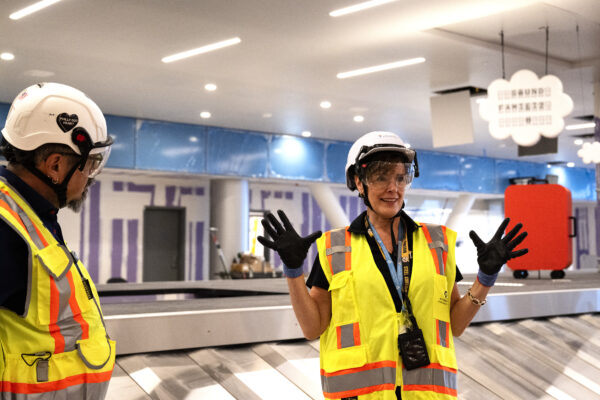
Cassotis giving a tour of the Pittsburgh International Airport
PITTSBURGH INTERNATIONAL BECAME THE FIRST MAJOR AIRPORT IN THE WORLD TO RUN ON ITS OWN NATURAL GAS AND SOLAR ENERGY MICROGRID. WHAT INSPIRED THAT INITIATIVE, AND HOW DO YOU SEE THIS SHAPING THE FUTURE OF AIRPORTS GLOBALLY?
In 2017, Atlanta had a major blackout and I saw its effects ripple throughout the aviation industry. In 2019, the same thing happened in Los Angeles, and I knew we needed to take action. Airports simply cannot lose power – the aviation ecosystem is too critical. Our team looked into options to increase resilience, and we decided to build the microgrid, which was commissioned in June 2021. Since then, many airports have visited to learn about how we did it and how they can potentially replicate it. The microgrid is proof that there are innovative solutions for energy resilience and independence at airports, and the industry is taking note. Our next step on this path is producing sustainable aviation fuel on-site, that could also be used to supply Northeast airports via pipeline, rail and barge. These initiatives are inspiring airports throughout the industry to look at their individual resources and determine what’s possible. There’s no one-size-fits-all approach – solutions will look different for all based on the resources available. But we all need to do our part to create a more resilient future for the industry.
HOW DO YOU BALANCE AMBITIOUS SUSTAINABILITY GOALS WITH THE OPERATIONAL DEMANDS OF A MAJOR AIRPORT?
At PIT, we are first focused on running day-to-day operations safely and securely and we also always have an eye on the future, which must be a financially sustainable future. All sustainability initiatives must start with financial sustainability. Aviation is one of the hardest to abate industries and has ambitious goals of achieving net-zero emissions by 2050. Our sustainability and energy diversity initiatives are incredibly important as they are building longevity and resilience for our industry and helping it earn its right to grow. In addition to being sustainable, they have positive impacts on the airport, region and industry. The microgrid has saved the airport millions of dollars in electricity costs while boosting resiliency and preventing interruptions from power outages. PIT has the resources available to support these initiatives, so the decision to utilize them is an easy one.
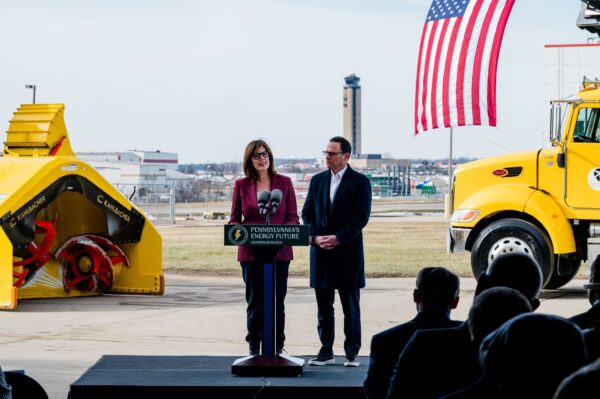
Cassotis at the PA Energy Press Conference
WITH THE NEW TERMINAL OPENING IN 2025, WHAT EXCITES YOU MOST ABOUT HOW TRAVELERS WILL EXPERIENCE PITTSBURGH INTERNATIONAL AIRPORT DIFFERENTLY IN THE YEARS AHEAD?
With the new Pittsburgh International Airport, I’m excited for travelers to have an improved passenger experience and feel supported throughout their journey from curb to gate and back. I’m also excited for everyone who gets to work here. It’s going to be a different and better experience and a place to be proud of. The new terminal was designed using Universal Access principles, making it welcoming to all. Everything, from signage designed with high-contrast colors visible to those with color-blindness, accessible height wayfinding and ticket counters, and restrooms with nursing lounges and adult changing tables in every concourse– was designed through this lens. When you make travel easier for everyone, it’s just good business. The design also reflects the unique characteristics of Western Pennsylvania, providing a distinct sense of place. The roof reflects its rolling hills, structural tree columns echo the robust tree canopy, and constellation lights mimic the night sky. Work from local artists and craftspeople is included throughout, helping to tell the story of our region. Pittsburgh has experienced a transformation, and our airport now serves as a fitting front door for our world-class region of today. Functionally, travelers will notice a big improvement with a streamlined security experience, shorter baggage wait times, enhanced concessions and more covered parking among the improvements.
LOOKING FURTHER AHEAD, HOW DO YOU ENVISION AIRPORTS EVOLVING OVER THE NEXT DECADE—IN TERMS OF TECHNOLOGY, SUSTAINABILITY, AND PASSENGER EXPERIENCE?
As technology evolves, it should continue to support and enhance roles of humans in travel, not replace them. Recently, we armed our team of over 100 volunteer ambassadors with tablets loaded with maps, internal messaging, flight and transportation information and language translation services to enable them to better assist passengers. Technology will continue to make the passenger and workplace experience at airports easier, safer and more efficient but it should not replace human empathy and care when something goes wrong. We are also testing many technologies through our xBridge innovation center that increase safety and efficiency, such as Bioflyte, which detects airborne threats within minutes. The airport’s xBridge innovation center partners with Pittsburgh’s technology companies and beyond to utilize the airport as a testing ground for the latest technology. These solutions can be scaled throughout the industry, addressing some of aviation’s biggest challenges head-on.
Energy resilience and diversity is and will continue to be a priority. There are many different options airports are exploring such as nuclear, electric and hydrogen. Solutions will be different for everyone, based on the resources available, but with recent events, like the power outage at London Heathrow Airport in March, there is a renewed sense of urgency.
There is an opportunity for U.S. Airports to focus more on passenger experience, as well as workplace experience. When you take care of employees, they can take better care of passengers. I think more airports will adopt universal access principles, making travel more welcoming for all who use and work at the airport.
WHAT ADVICE WOULD YOU GIVE TO YOUNG WOMEN WHO ASPIRE TO LEADERSHIP ROLES IN INDUSTRIES WHERE FEMALE EXECUTIVES REMAIN UNDERREPRESENTED?
Here is my advice for all young people in any industry – relationships are key. Soft skills are not soft – they are essential and will help you in any career. Learning to work well with others, including those who are different from you, is a talent that should be appreciated and refined. Making an impact will require support from those in your organization, community and industry – no one achieves great things alone. Those strong relationships are what will enable you to create positive change, and everyone deserves a seat at the table.



